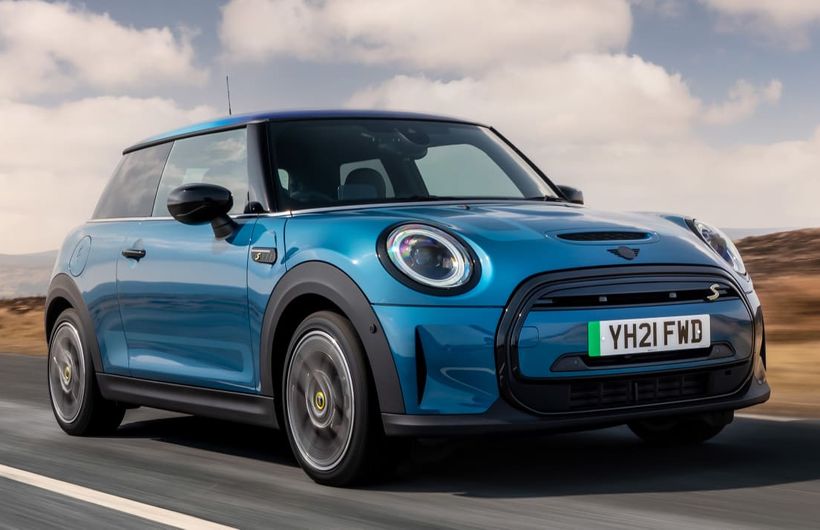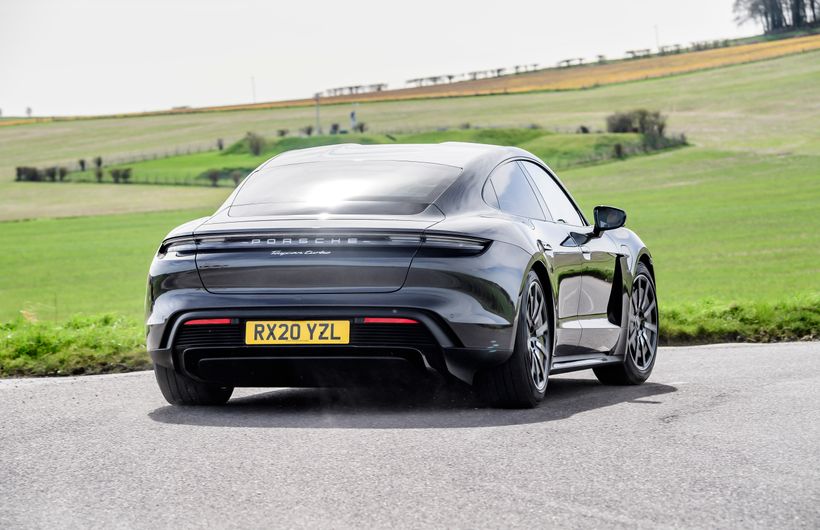Turning a profit from making cars can be tough, so vehicle makers are keen to sell you finance packages to help you buy them in the first place. They also help to make owning a car more affordable, so it's no surprise that only about 9% of vehicles sold in the UK are bought outright, according to experts.
This is especially important for electric models which are stuffed with unique, expensive-to-develop technologies. This makes them pricey to buy outright, but the monthly costs often make the sums add up for drivers.
So, if you want to know about the different options for financing your electric car, read on.
![MG ZS cars lined up on a dealer forecourt]() Less than 10% of cars are bought without using finance
Less than 10% of cars are bought without using finance PCP
Personal Contract Purchase agreements, known as PCPs, are by far the most popular funding packages. In 2020 the Finance and Leasing Association reckoned they accounted for 79% of total vehicle finance.
A PCP is a clever agreement which keeps monthly payments low by making you pay for the amount that a car loses in value over the time you have it, rather than the total price of the car. That cost is based what the finance provider thinks the car will be worth after a fixed period (say, three years).
This is its GMFV Guaranteed Minimum Future Value, which factors in things like the car’s projected age and mileage at the end of the deal. This value is guaranteed by the lender and doesn’t alter, and deferring it to the end of the deal generally means that monthly payments are less than for hire purchase schemes.
The interesting part of a PCP is that it favours cars which lose their value slowly, as the amount you will need to pay to cover the depreciation is less. This could mean that a more expensive car which is in demand could be cheaper per month than a model which is cheaper but not as desirable.
Finance houses are keen to lock drivers into such schemes, and will take back the car at the end of the period and provide a ‘rollover’ PCP deal on a new one using the final payment as part of the funding, or the driver can pay off (or refinance) the GMFV and own the car outright.
Exceeding the agreed mileage, handing back a damaged car or exiting the scheme early can all incur charges, so reading all that small print is important.
![]() Models such as the MINI, which are in demand, can be cheaper on a PCP than less desirable but cheaper cars
Models such as the MINI, which are in demand, can be cheaper on a PCP than less desirable but cheaper cars Personal Contract Hire
Also known as a simple lease arrangement, contract hirers never own the cars they drive, but enjoy fixed costs while they do so. The costs are often lower than other forms of finance too, and leasing companies buy in bulk so get some good deals and access to stock.
This funding method offers some tax efficiencies for sole traders and VAT-registered businesses too, as they can claim back the VAT on the monthly rental payments. During the lifetime of the agreement, contract hire customers pay the total amount their vehicle depreciates, not its initial value, together with any additional charges and interest. Payments often cover servicing and road tax costs.
Things to watch out for? Exceed the agreed mileage and there will be an extra pence per mile charge and if the car is damaged beyond normal wear and tear, you could be liable for extra charges to put it right. Terminate the agreement early, and you can also be stung with a hefty exit payment.
Most PCH lenders will want the car back at the end, so you are unlikely to be able to buy it.
![]() Leasing companies get good deals and access to stock
Leasing companies get good deals and access to stock Lease Purchase
According to the FLA, lease purchase schemes are often used to fund costlier, premium cars.
Lease purchasers own the car at the end of the deal, but pay in a similar way to lease/rental agreements. Instead of a deposit, drivers are asked to make a number of payments at the start of the agreement -which tends to last 2-4 years- and a sum known as a ‘balloon payment’ is deferred until the end of the deal, and calculated using the car’s age and mileage. Unlike a PCP, where the ‘balloon’ can be rolled over into a new deal, this has to be paid back, either in cash or by taking out another finance agreement.
Handing the car back to the finance house isn’t an option either. Generally, the monthly payments are lower, allowing buyers to go for plusher models, but if the actual value of a car turns out to be less than the balloon payment at the end of the deal, you’ll pay for that financially inflated balloon.
![Grey Porsche Taycan turbo parked rear]() Lease Purchase is used to fund costlier cars such as the Porsche Taycan
Lease Purchase is used to fund costlier cars such as the Porsche Taycan Hire Purchase
Most car dealers offer hire purchase deals (along with other schemes such as PCPs). These are regarded as one of the more straightforward vehicle funding methods, but they have fallen out of favour as the monthly payments are higher. The up side is that you will actually own the car at the end of the deal, rather than have to hand it back and be left with nothing.
HP is more common on used cars because of its simplicity and because alternatives such as PCP rely on predicting future values, which is tricky on older cars.
The deal usually lasts three or four years and normally has a fixed cost element because the APR annual percentage rate is decided before the contract begins. There will be some admin fees for transferring a car’s ownership, and you have the option of taking out another loan on a new car.
Someone with an HP agreement is the car’s registered keeper and responsible for maintenance and insurance until the loan is paid off. A Conditional Sale agreement is the same thing but automatically transfers ownership of the car at the end of the deal.
![]() HP is more common on used cars and bacon sandwiches
HP is more common on used cars and bacon sandwiches Mortgage Top-up
Many of the finance deals we’ve covered work in a similar way to a mortgage, and you can fund a car with the real thing. People who keep their cars for years sometimes go down this route.
You either borrow money against your home or take out a ‘second charge’ mortgage which allows your original mortgage to continue. You buy the car and repay the lender in monthly instalments. If you sell it before the mortgage is repaid, tough, you’ll have to keep shelling out every month until the debt is cleared. As payments are spread over a longer period they tend to be lower and the interest rate is keen, but the overall cost is often higher.
Personal Loan
If you want to own a car up front, a personal loan could be the way to do so. Arranged by banks and other finance houses, a personal loan is a lump sum to be spent on something specific. Generally, these loans are un-secured, so if you hit financial trouble, you can’t hand back the car and walk away from the commitment. If there’s enough equity in the vehicle you could sell it to repay the loan.
Advantages? Monthly payments are fixed and you can have some leverage on the re-payment schedule. Disadvantages? If your credit history is less than pristine, higher interest rates are often charged.
It’s possible to buy a car using a credit card too, and if you are particularly organised you might be able to swap balances between lenders to take advantage of low or zero interest deals. But you'll need a good credit history and make sure you are on top of the details, or you could find yourself exceeding the time limit and ending up with eye-watering interest bills.
![Silver Range Rover Sport p400e driving left side]() A loan on the Range?
A loan on the Range? Cash
If you are lucky enough to have some cash in the bank, the chances are that it's earning less in interest than you will have to pay on finance, so it makes sense to spend it rather than save and take a loan. The is no point paying the bank 6% interest while they give you 0.5%.
There are some exceptions though, such as 0% finance offers, but check that these are real savings, as the dealer might be prepared to discount the price for cash.
If the finance offer includes other sweeteners, such as free servicing or a deposit contribution, you will have to get out your calculator and do some sums to work out the best deal.
 Less than 10% of cars are bought without using finance
Less than 10% of cars are bought without using finance 

















